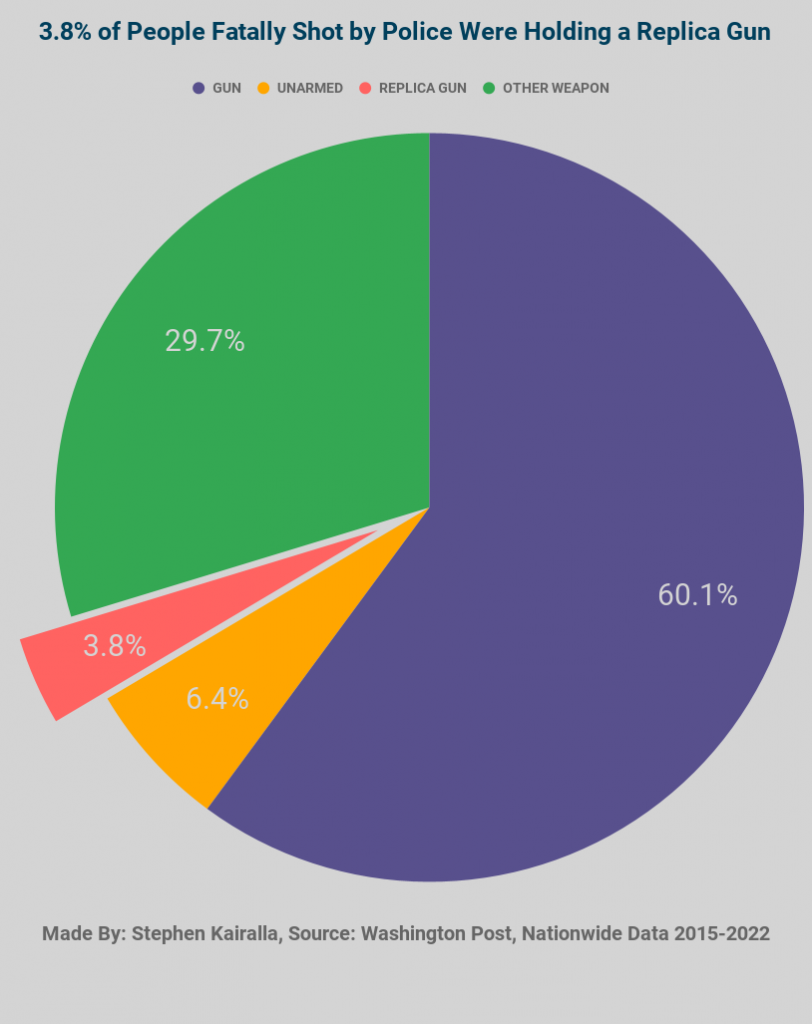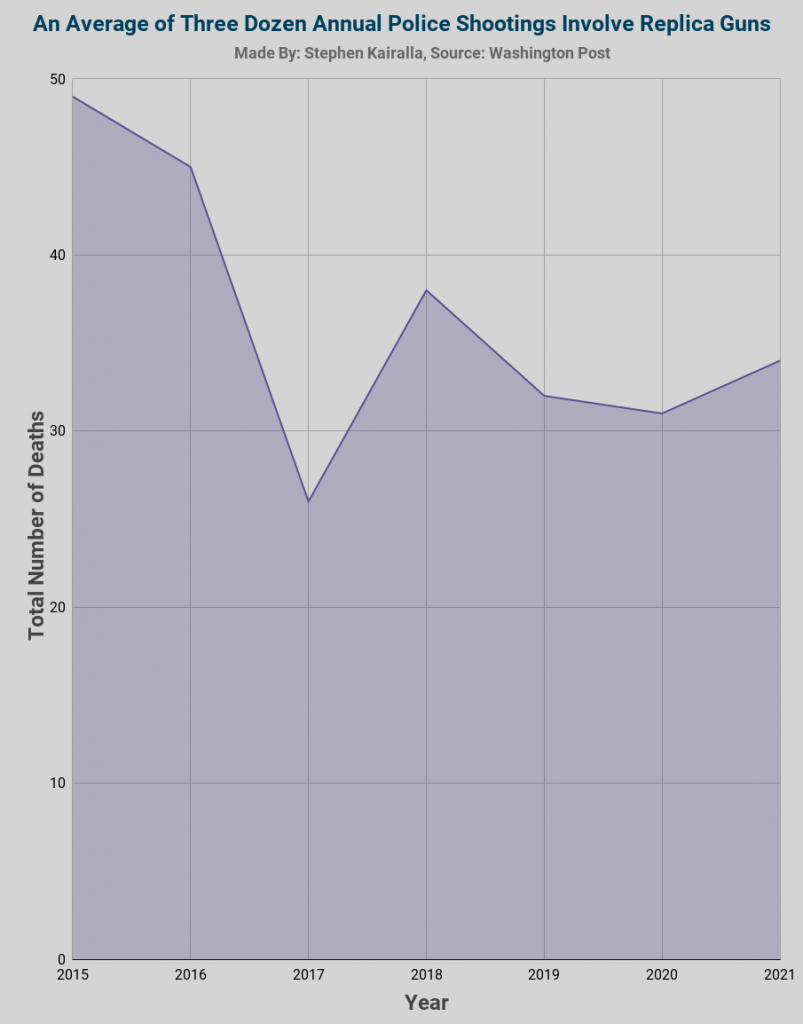Two hundred sixty-three times since 2015, police officers have made the split-second decision to kill someone holding what looked like a gun, only to later learn it was not a real gun.
“The days of dressing up like Roy Rogers and putting on our cowboy outfits and wearing the guns, I think those days are gone,” says Miami Police Benevolent Association President Steadman Stahl.
It’s late February. Stahl sits in a mahogany-appointed second-floor conference room in the PBA building, steps from the Miami-Dade Police Headquarters in Doral. In his hands is the photo I drove out there to talk to him about.
It’s an evidence photo of a realistic-looking pellet gun from a fatal police-involved shooting in Miami Shores six months earlier. He compares it to the guns he has carried over the years as a cop for the city of Homestead and Miami-Dade County.
“That looks identical, identical, that right there,” Stahl points his finger for emphasis, “I’m anticipating it’s a firearm.” For an officer on the scene, a fatal shooting is one layer of trauma; discovering what really happened is a second layer. “You have to take someone’s life,” Stahl says. “You have to deal with that, then the aftermath, the investigations, the second-guessing.”
On January 1, 2015, The Washington Post began compiling a list of every time an interaction with a police officer in the United States ended with a civilian death. As of March 1, there are 7,139 cases on the Post’s spreadsheet; and it gets updated regularly.
Below is a slice representing less than four percent of that data, where the person killed by police is holding something that looks like a gun but is not.

It is a lumping together of what the spreadsheet calls toy weapons, bb guns, pellet guns and airsoft pistols. The replicas are designed by their manufacturer not to be lethal to anyone they are directed at. Looking at the data, it is clear that they can be lethal to the man or woman holding them during an interaction with police.
Many of these replica guns have had their orange tips — which identify them as a toy — painted over in black to make them look even more real. The number of cases is consistent, and it is happening every year.

It is easy to think that the typical case for this kind of fatal shooting is Tamir Rice, the 12-year-old from Cleveland who died in 2014 when a police officer thought his toy gun was real. The truth is, all but five of the cases since 2015 involved legal adults and nearly two-thirds were in their 30s or older.
The woman who died in Miami Shores back on August 30 was 47 years old. Her family will never get over what happened, neither will the officer or his family. More so in these cases than perhaps any others, there are two victims here.
I asked Stahl about this. “It does affect the officers,” he tells me, “it lives with them.”
The data from the Washington Post can be found at the following link: https://github.com/washingtonpost/data-police-shootings
































